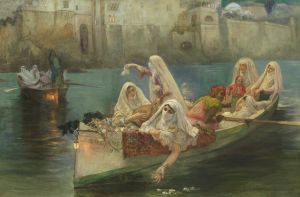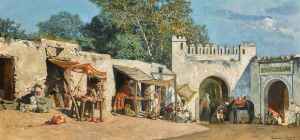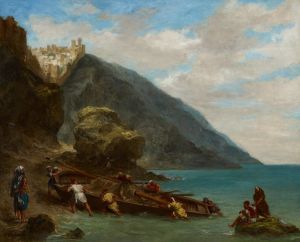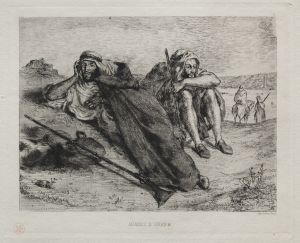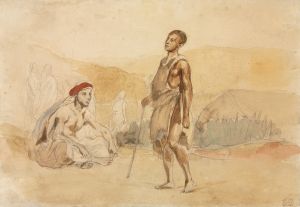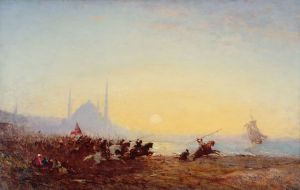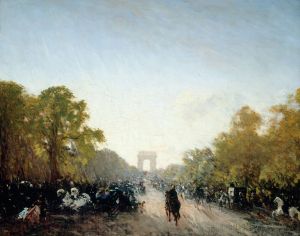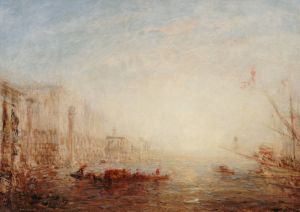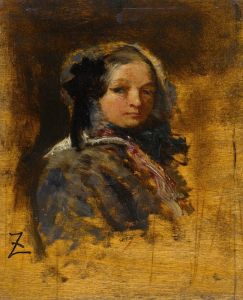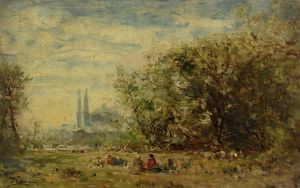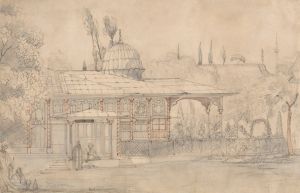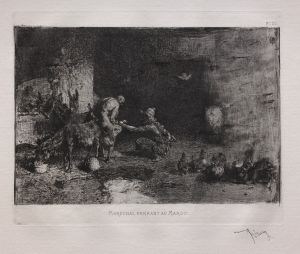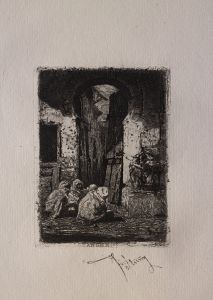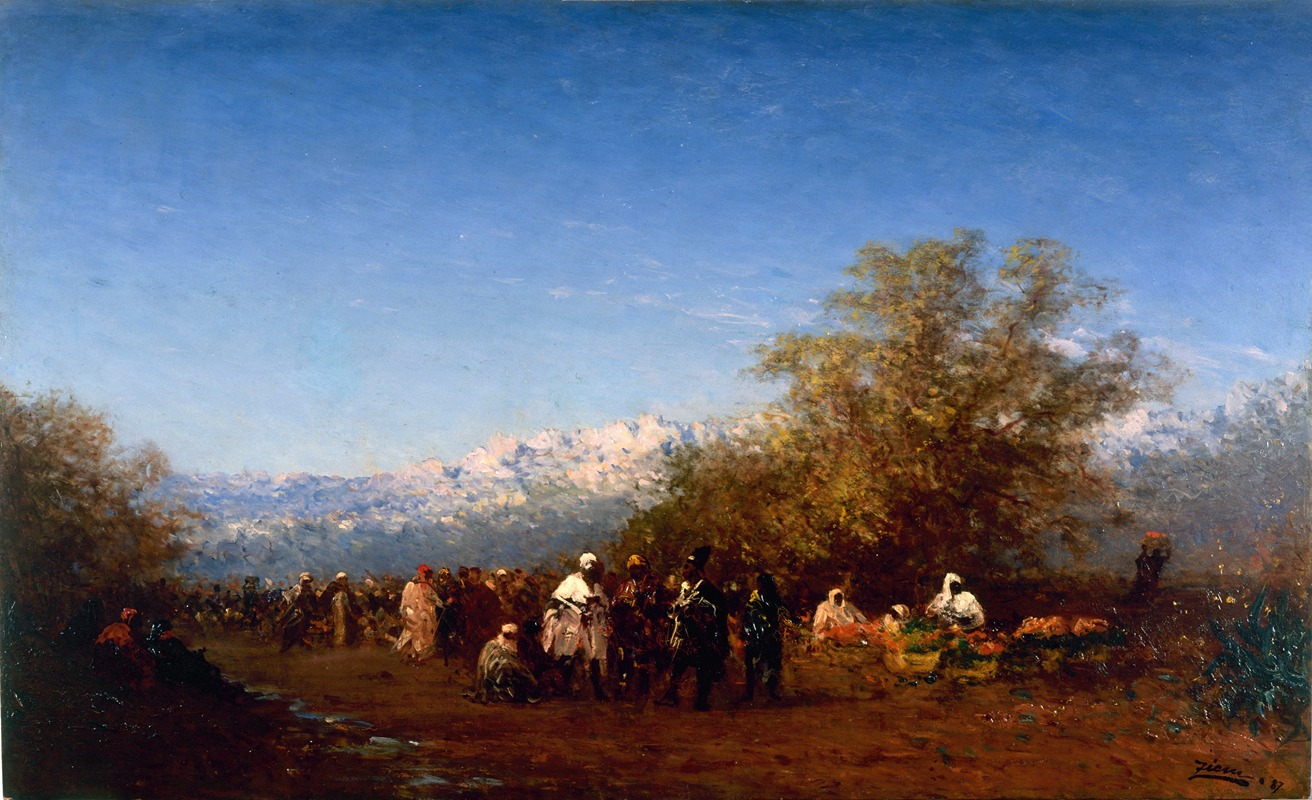
Marché à Fez
A hand-painted replica of Félix Ziem’s masterpiece Marché à Fez, meticulously crafted by professional artists to capture the true essence of the original. Each piece is created with museum-quality canvas and rare mineral pigments, carefully painted by experienced artists with delicate brushstrokes and rich, layered colors to perfectly recreate the texture of the original artwork. Unlike machine-printed reproductions, this hand-painted version brings the painting to life, infused with the artist’s emotions and skill in every stroke. Whether for personal collection or home decoration, it instantly elevates the artistic atmosphere of any space.
"Marché à Fez" (Market in Fez) is a painting by the French artist Félix Ziem, who was born on February 26, 1821, in Beaune, France, and died on November 10, 1911, in Paris. Ziem was a prominent painter associated with the Barbizon School and is best known for his vibrant landscapes and cityscapes, particularly those depicting Venice and the Eastern Mediterranean.
The painting "Marché à Fez" captures a bustling market scene in the city of Fez, Morocco. Fez is one of the oldest and most historically significant cities in Morocco, known for its rich cultural heritage and vibrant marketplaces. Ziem's depiction of the market in Fez is characterized by his use of vivid colors and dynamic composition, which bring the scene to life and convey the energy and atmosphere of the market.
Ziem's interest in Orientalist themes was part of a broader trend among 19th-century European artists who were fascinated by the cultures and landscapes of North Africa and the Middle East. Orientalism in art often involved romanticized and exoticized portrayals of these regions, and Ziem's work is no exception. His travels to the Mediterranean and North Africa provided him with ample inspiration for his paintings, and he was particularly drawn to the architecture, light, and vibrant life of these areas.
In "Marché à Fez," Ziem employs a rich palette to depict the market's lively atmosphere. The painting features a variety of figures engaged in different activities, from merchants selling their goods to customers browsing and haggling. The architecture of Fez, with its distinctive Islamic design elements, serves as a backdrop to the scene, adding to the painting's authenticity and sense of place.
Ziem's technique in this painting, as in many of his works, demonstrates his skillful use of light and shadow to create depth and movement. The interplay of light and color in "Marché à Fez" not only highlights the details of the market but also enhances the overall mood and vibrancy of the scene. This approach reflects Ziem's broader artistic style, which often emphasized the effects of light and atmosphere in his landscapes and cityscapes.
Throughout his career, Félix Ziem received considerable recognition for his work. He was awarded the Légion d'Honneur in 1857 and became a member of the prestigious Académie des Beaux-Arts in 1864. His paintings were exhibited widely, and he enjoyed both critical acclaim and commercial success.
"Marché à Fez" is a testament to Ziem's ability to capture the essence of a place and its people through his art. The painting remains an important example of 19th-century Orientalist art and continues to be appreciated for its artistic merit and historical significance. Today, Ziem's works can be found in various museums and private collections around the world, where they continue to be admired for their beauty and evocative portrayal of different cultures and landscapes.





